Text
Mob Psycho 100 Season 2
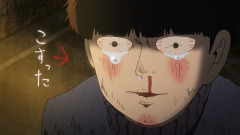
Hello and welcome to the first outright perfect episode of anime of 2019! Mob Psycho 100 knocked it out of the park this week in every respect, so let’s just jump right in!
Right off the bat, Bones is out in full force animation wise. Everything about this episode, visually, was fantastic. Even in drab, rain-slick scenes they found a way to introduce color to a drab landscape. And that isn’t even mentioning the wholly unique perspectives or styles for animation. Take for instance the straight up street fighter/fighting game reference. Done entirely in Mob Psycho’s style, it was a fantastic gag. Then there was one of my favorite styles, which only appears in Mob Psycho, the paint on glass effects. For depicting other worldly spirits, I think it does a fantastic job of showing that etherealness. Add on to all of this the sheer amount of sakuga throughout the episode, from Dimple jumping between trees, to the flowing sludge of the monster spirit, and you have a feast for the eyes. 2 weeks in and Bones has already won Animation. Wow.
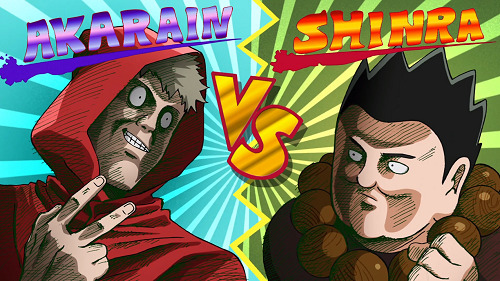
Now, onto the actual story content of the episode. Normally we would be entering the Urban Legend arc for the series, however parts of this were already covered in the first season. For instance, the exorcism at the girls highschool and the Scarecrow from the first episode were originally part of this arc. I think the way Mob Psycho handled those was still good, the Scarecrow was a good introduction and it didn’t hurt the series at all. It just means this arc won’t be as long as you might think, probably ending next episode. That isn’t to say it won’t be worthwhile though, if this episode was anything to go by. In a single episode Mob Psycho established a new psychic, set him up as a fraud only to reveal him as an upstanding citizen combatting spirits. Walking through his character in a single 22 minute episode. Lovely.
His whole “side story”, though really Mob and Reigan are the side story here, was great. I loved how it started with nothing paranormal at all, but hinting it might be. Then revealing it to be just a streaker that could be caught without powers. Until it all culminates in a big supernatural fight with a legitimate urban legend. Each of these with some sort of commentary on society, as the Dragger is fueled by peoples belief and cannot be fought by those who fear it. ONE (the author for Mob Psycho and One Punch Man) really is a great writer. He hits on these topics close to society or personal experiences, but wraps them in a supernatural shell. Removing it just enough from reality that it doesn’t become a direct critique of modern society, but still planting those ideas in the viewers heads.

Take the streaker for example. What started as a simple ass gag in a raincoat quickly turned into a dark dive into a criminals mind. Describing the mentality of the criminals high. How he gets off not only on revealing himself, but on everyone knowing he exists. A sort of perverse celebrity status. We see this in real life all the time with mass murderers, bombers and such. Who want to be known, want their message to get spread by the news media. It was all very dark, yet because of the previous setup with the childrens park, it worked well. Yeah, it might have jumped from jokey to serious a bit quickly. But I think Mob Psycho’s humor, which permeates everything about it, softened the blow a bit.
Meanwhile Mob and Reigan are off on their “side” adventure. What I love about this is that it reinforces Reigans character. We constantly see he is a con-artist, praying on people’s idiocy or troubles. Yet we also see he does legitimately care. Giving them peace of mind, or going out of his way to clean up an old man’s dog. To Reigan no job is to dirty or undesirable to do, so long as he gets paid and someone is happy. In fact we learn from Shinra that Reigan is charging far below the standard psychic price. Most likely it’s unintentional, if he thought he could get more he would go for it. But it reinforces that Reigan is not a prideful man, just one trying to get by on the only skill he really has. His maxed out charisma stat.

As far as the Dragger scenes go, I loved them.The whole sequence was animated fantastically, showing that no one can match Bones when they are their best. So many interesting angles, rotating shots and unbroken cuts. From the closeups of her face to the flowing sludge of the second half, Bones was here in full force. I also enjoyed the subtler aspects of the scene. Such as the water slowly rising up their feet, as the trees sunk behind them. The use of mud splashing against trees and landing in the shape of a screaming face. The tiny dolls themselves and their use in the fight. Simply put, Mob Psychois probably the best animated of the season and I fully expect it to compete for best of the year.
There was also the narrative aspect of the fight that was interesting. Last week Mob decided to start caring more about his emotions and such. This week tackles his social ineptitude and how breaking yourself off from fads isn’t necessarily a bad thing. It was Mob’s detachment, his individuality, that allowed him to face the dragger. He doesn’t care much what other people think, so the fads and pop culture never really took root in his mind. That of course has its downsides, it hurts his social prospects. But Mob Psycho also shows how it has its perks. Giving him the ability to think outside the box, not tied down by social conventions. To drive this home, right after this, Reigan talks to Mob about paying lip-service in the adult world. At least feigning knowledge of pop-culture, though he did it by yelling.
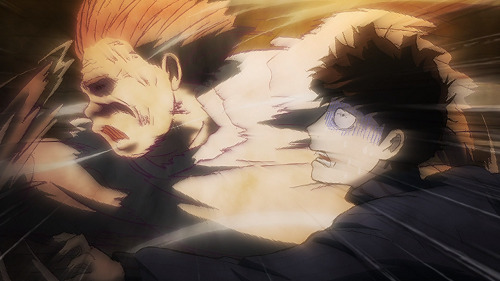
The slowly growing rift between Reigan and Mob aside, the last bit of the episode was the Dashing Granny. God this was a funny. This grandma gag was better animated than some full on series. All for a joke. In other series, I always reference the Simpsons and their layered jokes when discussing comedy. This is because I think the early Simpsons has some of the most clever comedic timing and writing on TV. Here, we see Mob Psycho displaying the same kind of layering. The joke starts with the running grandma. Then it becomes less of a joke and more a “serious threat” since it can’t be exorcised. Mob can’t run for shit, but the first punchline hits as she just ignores him and runs by in an over the top fashion. Only to throw in one more punchline with Mob’s Body Improvement Club. Layers. Like an onion. Fantastic.
All in all, Mob Psycho is now 2 for 2 on fantastic episodes. They have so much going for them, so many layers in every aspect. The animation is a step above everything else of the season. The narrative is deep and the jokes are snappy. Clearly a lot of love and care has been put into this series. It shows in every frame. If I had to pick something to nitpick about, it might be the sound design/VA’s, but that is really stretching it. Like, nitpick to the point of absurdity, stretching it. I like both and it’s only rarely that something sounds funny to me. So with that all said, I think it safe to safe, Mob Psycho is fantastic and you should watch it.
1 note
·
View note
Text
The TWIST Moment: The Popularity of Antagonists

Popular villains and antagonists have been around for the longest time, but have we ever stopped to consider why they exist? There is definitely an undeniable attraction to certain antagonists. Aren’t viewers supposed to vote for the good guy?
Airing during the Fall 2017 season, Inuyashiki delivers a solid plot and a hard choice: either rooting for the protagonist, Inuyashiki Ichirou, or the antagonist, Shishigami Hiro. Both are very similar in the way that they’d never felt alive before until an accident that affects the both of them causes the two characters to accomplish things that make them feel human and living. The way that Inuyashiki and Shishigami do this is extremely different–the elderly main character saves those in danger and cures patients from fatal illnesses–while the teenage high school student murders random families and commits mass shootings.

While it is exciting to watch Inuyashiki perform miraculous deeds out of the goodness of his heart, the antagonist’s sheer coldness wins over many of the viewers. In the show itself, Shishigami gets fan pages and followers even with the death count being in the thousands. It might be due to just his ikemen looks, or how he doesn’t care about the police and such at all. There is a contrast in his personality, where he will do anything to protect his loved ones and will cry like a normal human being.
Then, there are shows that blur the line between the good and bad. Take Death Note, where the protagonist is technically the bad guy. Maybe we were biased into liking Light more because he was the main character, but there were hardcore fans of L as well. In the anime itself, Light gains immense popularity as Kira, even though he’d killed numerous amounts of people that included the innocent.
This calls into question our society today. If there was a person who had a special ability to kill like Shishigami or Light, wouldn’t the mass hate the guts of that person? It might depend on just the culture, as I refer back to the Japanese criminal-turned-celebrity who engaged in cannibalism. Issei Sagawa does not exactly have a large following of fans, but the very fact that he’s so well-known and living in open proves that societies in different countries are different.
Maybe the attraction towards villains is not exactly complicated either. From Re:Creators, the antagonist Altair was popular among fans for being overpowered. She was also seen as an anime character in the anime itself, and the public in the anime began to cheer for Altair even when she was fighting and killing favored heroes in the show. All this stems just from the truth that Altair was powerful and cold.
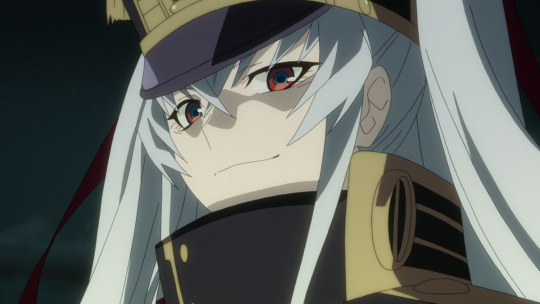
Popular bad guys aren’t necessarily a bad thing either, the only hard part I see about it is that they’ll always end up losing. The pattern so far seems to be that cruel and analytical characters gain the most popularity. Undoubtedly, these kinds of characters always make a story more interesting anyway, so here’s to more popular antagonists in the future!
0 notes
Text
Top 5 Comedy Anime

Feeling sick? Well, they say laughter is the best medicine and if that’s the case miso’s got you covered with this list of hilarious, comedy anime that are bound to cure any cold. And if you’re not sick? Just keep the quote “An ounce of prevention is worth a pound of cure” in mind.
Gintama
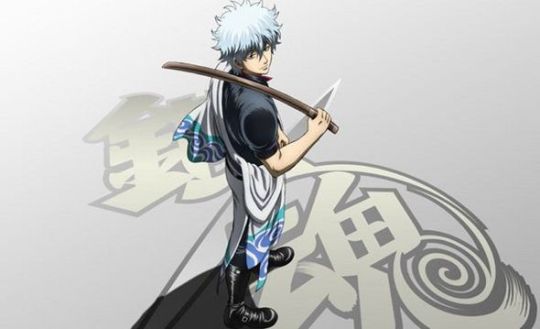
In a world where feudal era Japan has been invaded by aliens, Gintama focuses on the adventures of Gintoki Sakata, a sweet-loving samurai who runs Gin-chan’s Odd Jobs. Accompanying him in this work is the bespectacled teenager, Shinpachi Shimura, and a red-haired “china girl,” Kagura, whose powerful hunger is matched only by her ridiculous strength. From run-ins with the police to legendary assassins, their lives as not-so-professional errand boys are hardly simple.
Gintama goes above and beyond with its clever grip of mockery by not only parodying other fictional works but everyday life itself, turning both the extraordinary and perfectly ordinary into chances for hysterical, often awkward, and sometimes heartwarming interactions between its fun cast of characters.
Azumanga Daioh

Azumanga Daioh follows the life of Chiyo Mihama, a 10-year old prodigy already in high school. Chiyo’s class is full of peculiar people like the hyper and enthusiastic Tomo Takino; Sakaki, a tall, athletic girl whose cool exterior shelters a sweet personality; and Ayumu Kasuga, a spacey transfer student from Osaka. Heck, even the teacher’s wacky enough to steal a student’s bike when she’s running late for work! Together this group navigates the ups and downs of school life.
A relaxing and lighthearted ride from beginning to end with just the right amount of absurdity and flying pigtails thrown in, Azumanga Daioh is reminiscent of a late night talk with one’s own friends. You’ve stayed up far too long, you’re not entirely sure why you’re laughing so much but it’s incredibly fun and you wouldn’t want to be doing anything else in the world.
Osomatsu-san
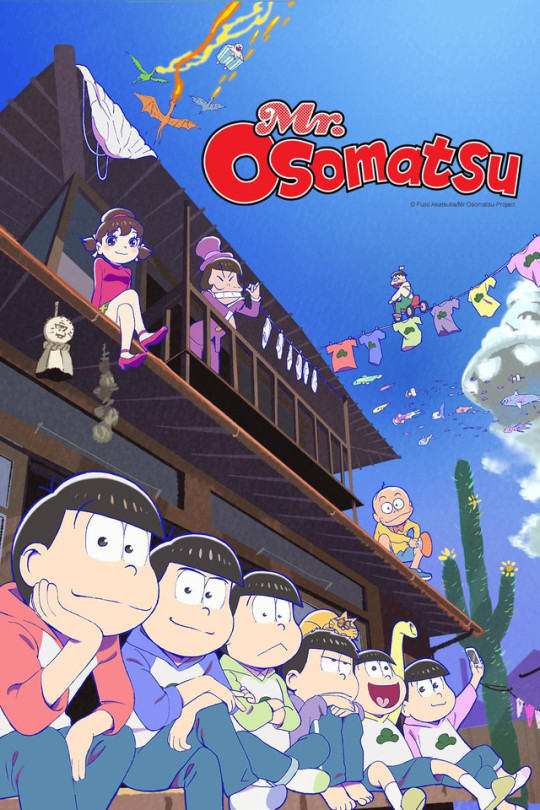
The Matsuno family is cursed…with six lazy NEET sons: the bullheaded (self-proclaimed) leader Osomatsu, cool guy wannabe Karamatsu, straight man Choromatsu, melancholic Ichimatsu, energetic Jyushimatsu, and “adorable” Todomatsu. These identical brothers typically avoid work like the plague but even when they miraculously land an interview, it’s expected to go quickly awry due to each sibling’s embarrassing personalities. Little by little the Matsuno’s discover more about themselves, the world, and what’s really important… maybe?
The sextuplets’ daily misadventures, such as finding a date or getting invited to a party, are wrapped in a colorful and occasionally lovably crass bow. This leads to gags that are as random and unexpected as can be, all connected by feelings anyone with siblings (whether one or five) can relate to.
One Punch Man

Saitama is a superhero with a dilemma. Despite his overwhelmingly ordinary appearance, Saitama is too powerful for his own good or at least his own entertainment, able to defeat enemies with a single punch. This has left good-doing extremely boring; however, not all hope is lost! When the young cyborg, Genos, arrives, wishing to become Saitama’s disciple, Saitama learns that nobody has even heard of him, With his new partner by his side, Saitama finally becomes a certified hero and begins his adventure of seeking the thrill of battle and just maybe…popularity?
Full of both satire and self-aware enjoyment of its action hero genre, the show’s leading man Saitama himself is an amusing take on the typical shounen protagonist, unusually laid-back and readily equipped with terse commentary. One Punch Man could be seen as having one joke, one punchline, and a lot of entertaining ways to get there.
Ouran High School Host Club
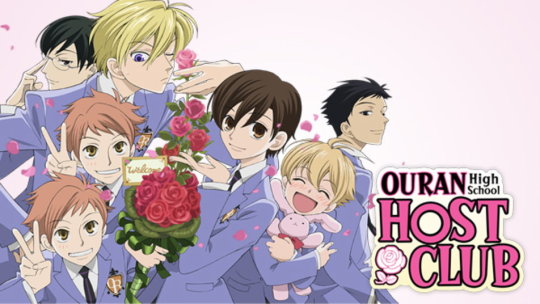
Ouran High School Host Club focuses on Haruhi Fujioka, an intelligent scholarship student without any titles or riches to her name, unusual for the high-class Ouran High School. While looking for a quiet place to study, Haruhi stumbles upon the Host Club, a place where handsome boys with too much time on their hands entertain girls with the same problem. In her desperate attempt to the flee the hosts, she ends up breaking an incredibly expensive vase. Originally forced into running errands for the club, Haruhi becomes swept up in the life of a host thanks to her short hair and boyish appearance.
Ridiculous trials and events await young host Haruhi as she deals with the seemingly stereotypical members of the host club… and their fascination with her “commoner” status.
0 notes
Text
The TWIST Review: “Youkoso Jitsuryoku Shijou Shugi no Kyoushitsu e”

Youkoso Jitsuryoku Shijou Shugi no Kyoushitsu e, literally translated to Welcome to the Classroom of the Elite and otherwise known as just Classroom of the Elite, aired during the summer 2017 season and made somewhat of an impact in both the Western and Japanese community.
The protagonist, Ayanokouji Kiyotaka, is a male high school student (where haven’t we seen that before?) and the anime’s first episode showcases his first day at a new school. He, of course, sits in that one seat all protagonists somehow get— the seat next to the window in the last row. All of this is seemingly normal and old, but the first episode will make you change your mind right away.

An anime praised for its art, with emphasis on the hair and eyes, that resembles a basic high school slice of life pulls viewers in with its plot twists.
Just by looking at the cover, I went into this expecting the usual high school harem. As soon as the episode started, a black screen with philosophical text appears. It begins with the main character’s commute to school on the bus and gives an interesting take on what happens when there are no more bus seats and a grandma has trouble standing. From just that scene alone, Ayanokoji’s personality and values are revealed to the watcher. He is a person who will almost not put any effort into anything, and there are no emotions within him. He himself does not speak often; his monologue is enough for the viewers, and his voice actor Chiba Shouya (Kotarou from Tsuki ga Kirei) did a really, really good job at the monotony.
With each episode, the protagonist’s past slowly reveals more information about him, and he clearly is hiding a lot. This goes for every character in the show: no one is to be trusted; the school itself and every other single student especially. The refreshing part of this show is how cliché everything would be without the added dark elements. You expect certain tropes, but they end up being overturned. I personally enjoyed this show greatly; it started off well and I was excited to watch it as soon as a new episode came out.
The premise and actual plot are interesting enough so that it doesn’t make you fall asleep. With a badass main character and a great OP/ED, the anime deserves a solid 4/5 miso soups. Honestly, this is an anime I’d recommend to anyone; the pacing is good, the characters are well written, and it makes you end up with a hundred different theories for explaining certain things. There wouldn’t be too much of a difference from binging it all at once or watching it over some time.
Though I haven’t read it myself, the light novel would undoubtedly be a good read as well. Take the chance to follow the main character’s unique perspective of society and the other people around him— which is scarily relatable at times.
0 notes
Text
The TWIST Review: “JoJo’s Bizarre Adventure”

JoJo’s Bizarre Adventure is a show I had heard about for a while before finally getting pushed to watch by some friends and family. Even after seeing a plethora of gifs and references, I wasn’t sure what to expect going in, except one heck of an interesting ride and plenty of extremely manly men.
The anime does not have a very complex or original plot but the delivery is an amusing, enjoyable homage to works of the 1980s that even many who didn’t grow up in that era can recognize. It follows several aspects of a classic bad vs good, black vs white tale with fun villains named after rock bands and the interesting fighting technique of Hamon to liven things up. However what makes JoJo’s story unique is that it follows not just one protagonist, but generations of the Joestar family. Because of this though, the characters, like the plot, are relatively simplistic, each of their individual quirks, seeing how relationships grow as time passes, and watching their legacy unfold makes it easy to get attached.
Similar to the story-telling style of JoJo, the artwork and animation is heavily stylized and influenced by anime of decades past. While this means it may not be as smooth or attractive to most viewers, it does a fantastic job of pulling it off and makes use of atmospheric color palettes to give the visuals a flair you are bound to strictly associate with the show. I would be amiss not to mention the music of JoJo. The soundtrack itself is fun and full of variety that fits well; however what is truly something to write home about are the opening and ending themes. Both openings were incredibly catchy, pumped me up to the fullest for the episode to come, and I would consider them genuinely unskippable. The ending, Roundabout by progressive rock band Yes, is also a peculiarly perfect match that never stopped being enjoyable.
There are things that may grow tiring for viewers such as the constant narration and possibly overbearing explanations and if you’re looking for a masterfully crafted plot full of intrigue you will not find it here, but overall JoJo’s Bizzare Adventure possesses a trait that most shows, from the most comedic to most dramatic, can benefit from. It doesn’t take itself too seriously. I would readily invite any lovers of comedy or those wanting protagonists they can cheer for every step of the way to come follow along with the colorful and bizarrely entertaining adventures of the Joestars.
0 notes
Text
The TWIST Review: “The Royal Tutor”

“The Royal Tutor” (also known as “Ōshitsu Kyōshi Haine”) is the anime adaptation of the Japanese manga series written by Hisaga Akai. The series follows Heine Wittgenstein, a youthful-looking man with a mysterious past, tasked with mentoring four of the five heirs to the Glanzreich throne.
I have no shame in admitting that the delicate art style and bishonen characters are what originally drew me to this anime (despite being a critic, I am human too). However, I also admit that this anime exceeded my expectations. With its over-dramatic opening credit sequence and Ouran Host Club-esque introduction, I initially expected The Royal Tutor to be a sort of copycat male-harem anime with little plot and a lot of fan-service. Instead, I received the opposite.
Almost immediately after the commercial break, the show dives right into character development, starting by breaking the viewer’s preconceptions about each of the characters personalities. The character development is a constant narrative and catalyst in the show, while any sort of fan-service is really few and far between. Albeit the show can be a bit emotionally over-dramatic when unnecessary, while scenes that really do hold drama or suspense tend to be a bit underplayed, making for some scenes to feel telenova-like or even a bit awkward. Yet considering the overall tone of the anime is meant to be lighthearted and endearing, the drama isn’t so much of an issue.
Despite the warm undertones, the show is also able to maintain enough mystery and suspense to engage the viewer throughout the season. Episodes are set up to where one story arc can be completed by commercial time, leaving enough room for a new one to be set up and hook the viewer on a cliffhanger. Its a great tactic for maintaining engagement while the viewer can feel like they’re actually getting two episodes in one (a win-win scenario in my opinion). Meanwhile, the season retains various unsolved plot points that could be alluding to the show being renewed for multiple seasons (hint-hint to any fans of the series reading this).
Something that is worth noting about the show is the attention to detail. Whether it’s in the characters’ outfits or the world building, the show really puts in the effort (which I would expect no less from anything being produced by Square Enix). On top of that kudos should definitely be given to the anime’s creator Higasa Akai. Although the series is based in a fairytale-feel fantasy setting, problems and situations are dealt with on a realistic level with no magic or fantasy involved. This allows for situations that are much more relatable to the audience and further enhances the character development that the show depends on.
Ultimately, The Royal Tutor is an anime that can be enjoyed by a general audience, even though the character design and art style may appeal to particular niches. Each episode feels quite fulfilling yet the mysteries and hooks can easily make one prone to binging. So, if you enjoy deep character development (or have ever suffered from traumatic experiences in your academic environment) then this show is worth putting on the watchlist.
0 notes
Text
The TWIST Review: “Haven’t You Heard? I’m Sakamoto”
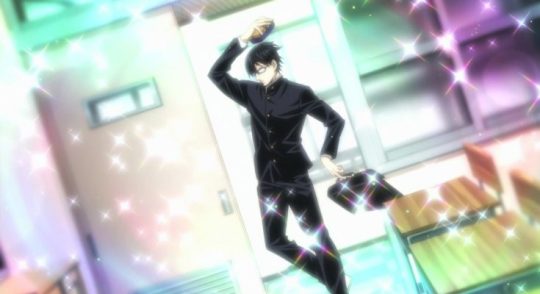
“Haven’t You Heard? I’m Sakamoto”, also known as “Sakamoto Desu Ga?” (“坂本ですが?”) , is an anime adaptation of the Japanese manga series written and illustrated by Nami Sato.
Haven’t you Heard? I’m Sakamoto is a show that is able to take the mundane and make it incredibly hilarious. The anime focuses entirely on one character named Sakamoto, who is apparently the Japanese bishonen equivalent of the Fonz, as everything he does his classmates fan over. He’s good-looking, smart, athletic, and in some ways out of this world. However by no means does this guy have any super powers or special abilities, unless you count his apparent lack of self-doubt as one. Instead, Sakamoto’s real talent lies in his ability to improvise his way in and out of situations. From turning bullies to friends to saving a bird from a typhoon, Sakamoto always seems to know how to handle things.
Despite the slow start, this anime has a lot of good features to it. However what makes this anime worth watching isn’t just the absurd plots and smooth animations. Rather, it’s the perspective. All the story-telling is done through the eyes of his peers and people he encounters. What we learn about Sakamoto is never directly through him, but through his interactions with others and their perceptions of him. We never learn where Sakamoto lives, his first name, or anything you could account towards being part of a main character’s backstory unless the supporting characters discover it. It makes for unique story-telling which inadvertently places the spotlight on various other characters in and outside the classroom, giving them a chance to develop their own identities and personalities (as well as their infatuation or infuriation for Sakamoto).
Although there are one or two episodes that may be a bit beyond absurd, the show overall has a good flow and humor to it. In addition, each “episode” is technically made up of two, which helps keep the story moving and maintain a level of intrigue for the viewers. Overall, Haven’t you Heard? I’m Sakamoto is definitely the anime for someone who is looking for a show reminiscent of that nonsensical, “Adult Swim”-style humor seen in western cartoons like Harvey Birdman: Attorney at Law, with the flair and intensity of JoJo’s Bizarre Adventure. Plus, with only 13 episodes, this anime is an easy escape for anyone looking to unwind after a long day’s work.
0 notes
Text
The 3 great Psychological Anime

If you had the choice, would you dive into a parallel universe in which you are just another drop in the ocean? Probably not, but the following is a collection of anime which portray so! This unordered list of psychological, dystopian anime is sure to immerse you in to what may very well be your worst nightmare.
Nagi no Asukari
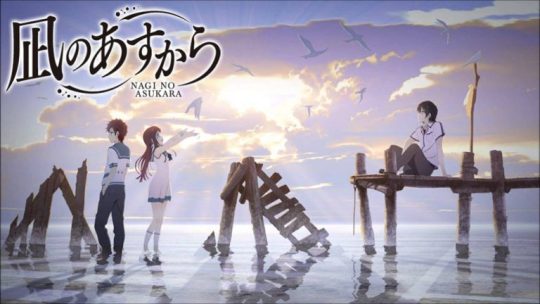
Nagi no Asakara (A Lull in the Sea) follows the lives of four childhood friends (Hikari Sakishima, Manaka Mukaido, Chisaki Hiradaira and Kaname Isaki) in an underwater city. After the sudden closure of their school, the four are sent from the sea to the land to attend another school. Although initially discriminated against by their classmates and separated due to cultural differences, the group soon discover that the surface isn’t all too different from the sea, becoming close to a surface-dweller and fellow classmate, Tsumugu Kihara.
The calm arrives before the storm, however, and Hikari and his friends have yet to realize that the world know, and the people they love are about to change – for better or worse. A story about love, bravery and selfless sacrifice has yet to unfold.
Psycho-Pass

What if you could prevent a crime before it occurred? Psycho-Pass immerses viewers into a utopia where this is indeed possible. Leading a group of mysterious misfits and convicts-to-be, neophyte Inspector, Akane Tsunemori, upholds the law by subjugating any possessing ill-will.
As she progresses deeper into her conquest to vanquish the city of potential threats, Akane discovers that the system isn’t as flawless as others reckon; soon becoming tangled in a web of morality, with the lives of her friends and companion, Shinya Kougami, on the line.
Shinsekai Yori

Due to an incident pertaining to humans gaining telekinesis abilities, civilization crumbled and many resorted to violence with their newly attained powers. After this period of chaos, a group of psychic humans found a new society and attained fragile peace, guarding their nation with strict rules and beliefs.
At age twelve, Saki Watanabe awakens her psychokinesis powers and joins her four friends at Sage Academy – a school for psychics. Saki soon discovers that all is not as it appears to be, having heard the rumors of Tainted Cats which kidnap children, as well as the questionable fate for those who cannot control their psychic abilities. Shinsekai Yori tells the coming-of-age story of Saki Watanabe and her friends as they attempt to discover the truth behind their utopian society, as well as challenge the
Shinsekai Yori tells the coming-of-age story of Saki Watanabe and her friends as they attempt to discover the truth behind their utopian society, as well as challenge the current ideas and practices.
This concludes the top three psychological anime list! Like it, hate it, or have a recommendation of your own? Let us know in the comments below. See you next time!
0 notes